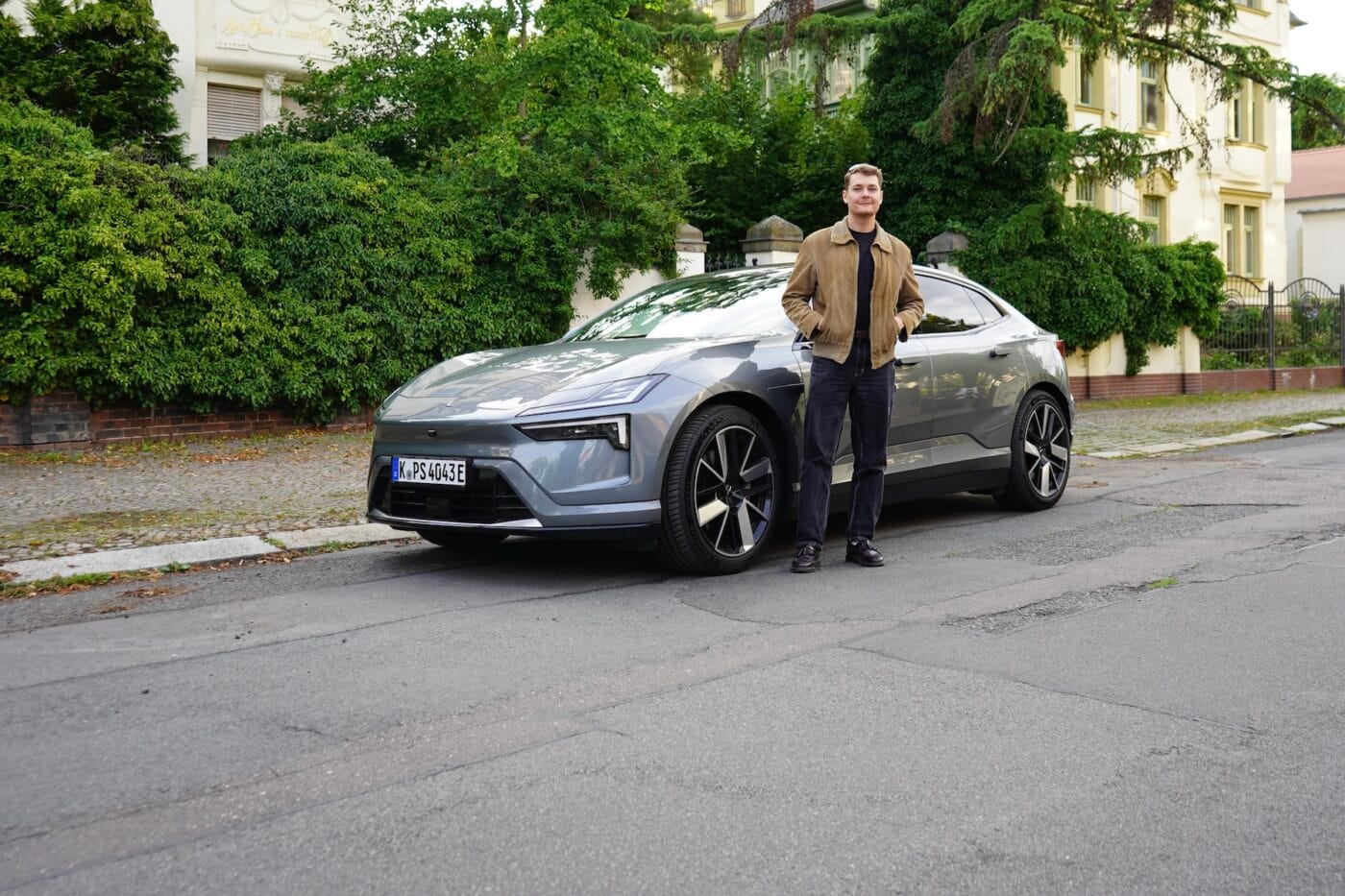
Prueba del Polestar 4: ¿Así es la calidad premium china?
Polestar La gama de modelos puede resultar confusa, aunque actualmente el fabricante sólo ofrece tres series. El miembro más reciente de la familia de la filial de Geely es un llamativo coupé crossover que, aunque no es el buque insignia de Polestar, lleva el número más alto en su nombre. Ese papel corresponde al Polestar 3 SUV, casi 17.000 euros más caro en su forma básica, posicionado en la gama media alta y lanzado unos meses antes. Independientemente del posicionamiento, la marca sigue una estrategia de nomenclatura cronológica.
Pero la nomenclatura no es la única elección poco convencional que hizo Polestar con el Polestar 4, en el mercado desde 2024. Visualmente, es inmediatamente reconocible como un Polestar gracias a detalles de diseño como la firma luminosa. Sin embargo, en términos de categoría de vehículo, se niega a encajar perfectamente en una caja. Una cosa está clara: con 4,84 metros de largo, 2,01 metros de ancho y 1,53 metros de alto, se parece más a una berlina fastback elevada o a un coupé de cuatro puertas que a un SUV convencional. Aunque el Polestar, con un precio a partir de 61.900 euros, sin duda necesita todo el carril.
Una mirada por encima del hombro es inútil
Durante nuestras pruebas de conducción, el Polestar 4 atrajo muchas miradas, menos por su forma básica y más por la ausencia de luneta trasera. Según los suecos, no se trata de un truco: los diseñadores querían preservar la fluida línea del techo en la producción en serie. Con el pronunciado ángulo trasero, una luneta trasera convencional habría estado tan inclinada que la visibilidad trasera sería casi nula de todos modos.
Por ese motivo, la filial de Geely lo omitió por completo e instaló en su lugar cámaras montadas en el techo. La imagen trasera proyectada en el "espejo" tiene buena resolución y un amplio campo de visión, por lo que acostumbrarse a este detalle poco convencional no lleva mucho tiempo. Al principio sigue girando la cabeza instintivamente al aparcar, pero pronto confía en la cámara de marcha atrás y en la visión de 360 grados de la pantalla. Las diferentes perspectivas que se muestran en la pantalla también ayudan al girar. Que la voluminosa parte trasera -que recuerda al caparazón de una tortuga- le resulte atractiva es, por supuesto, cuestión de gustos.
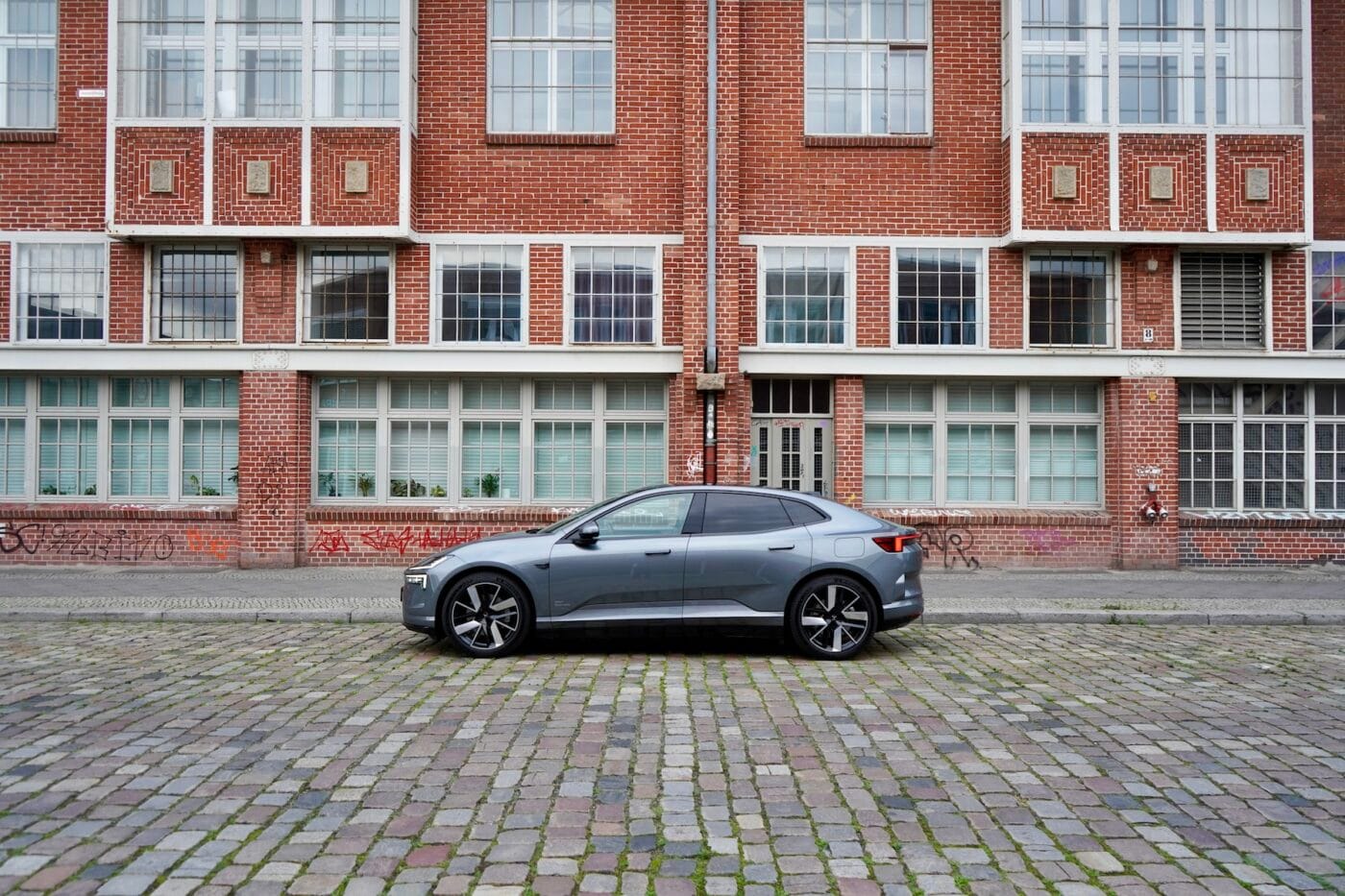
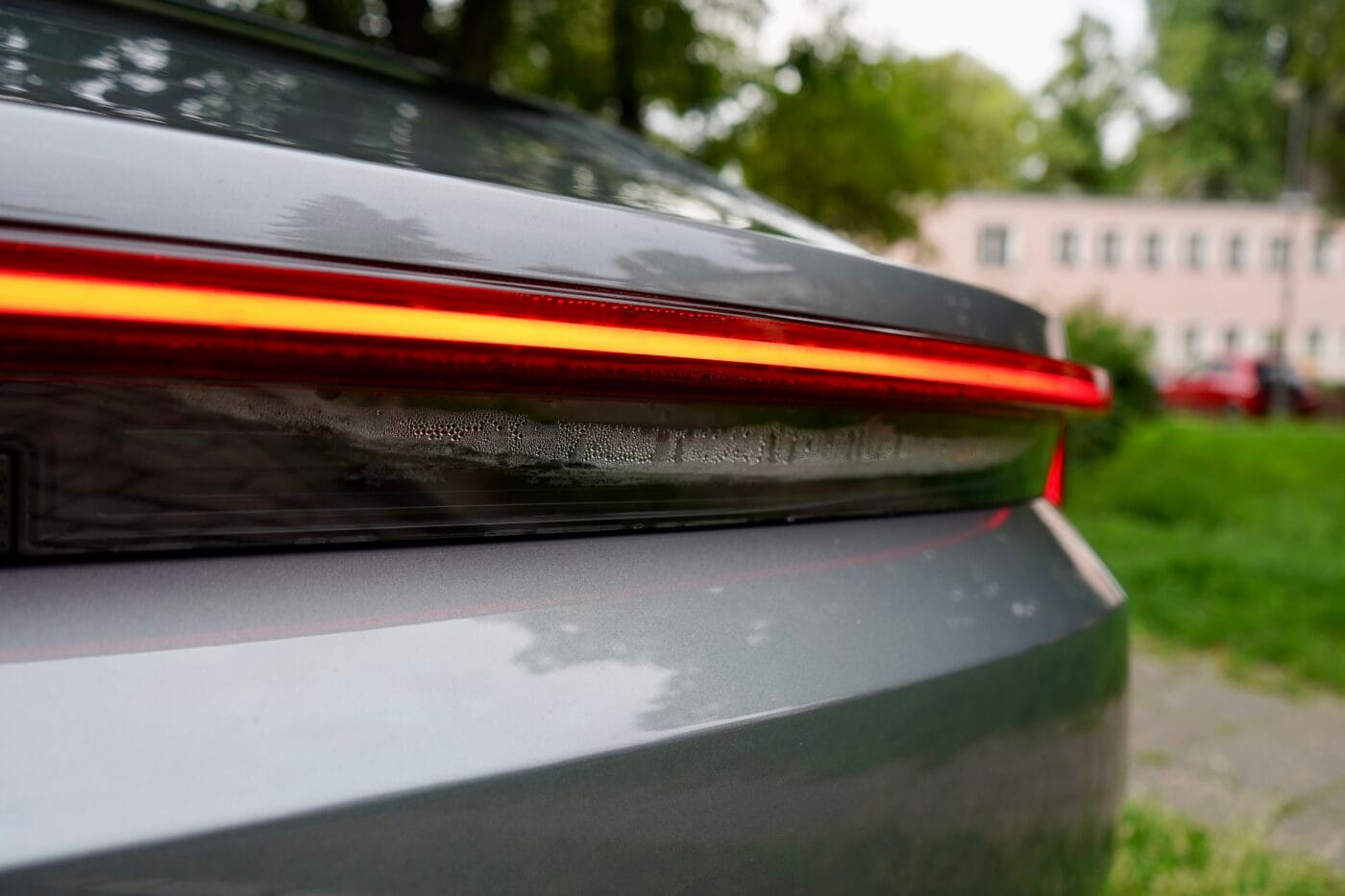
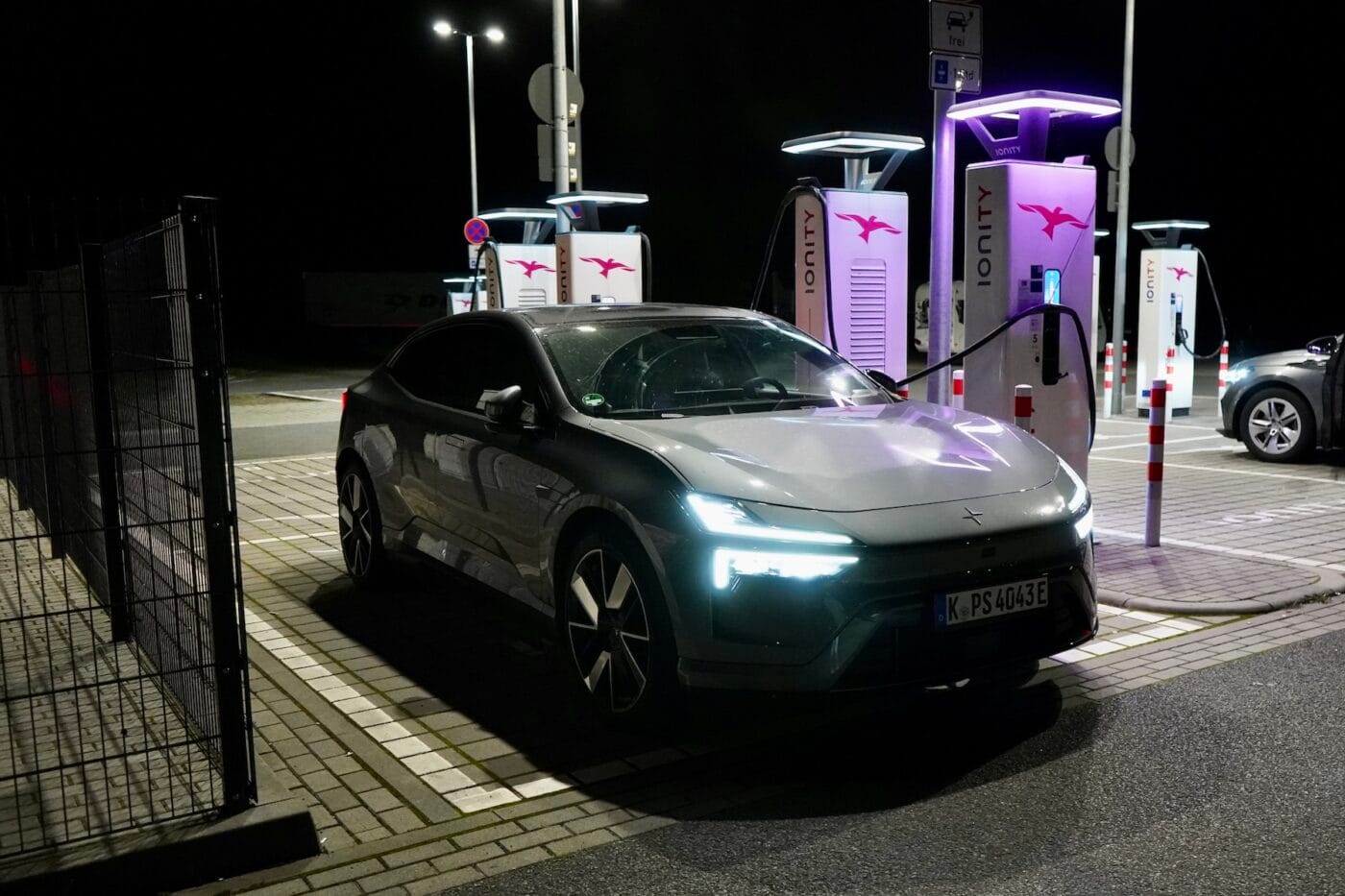
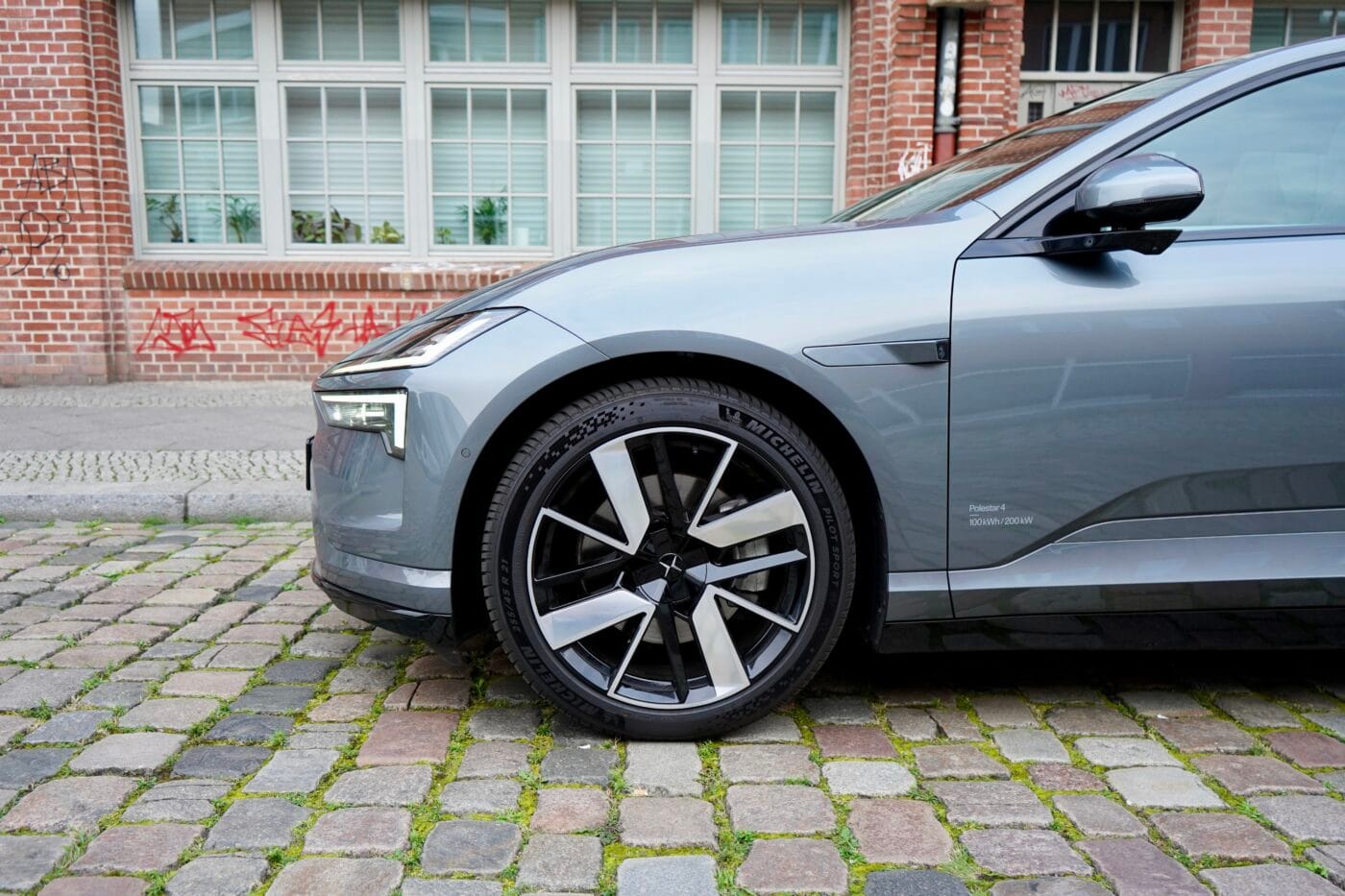
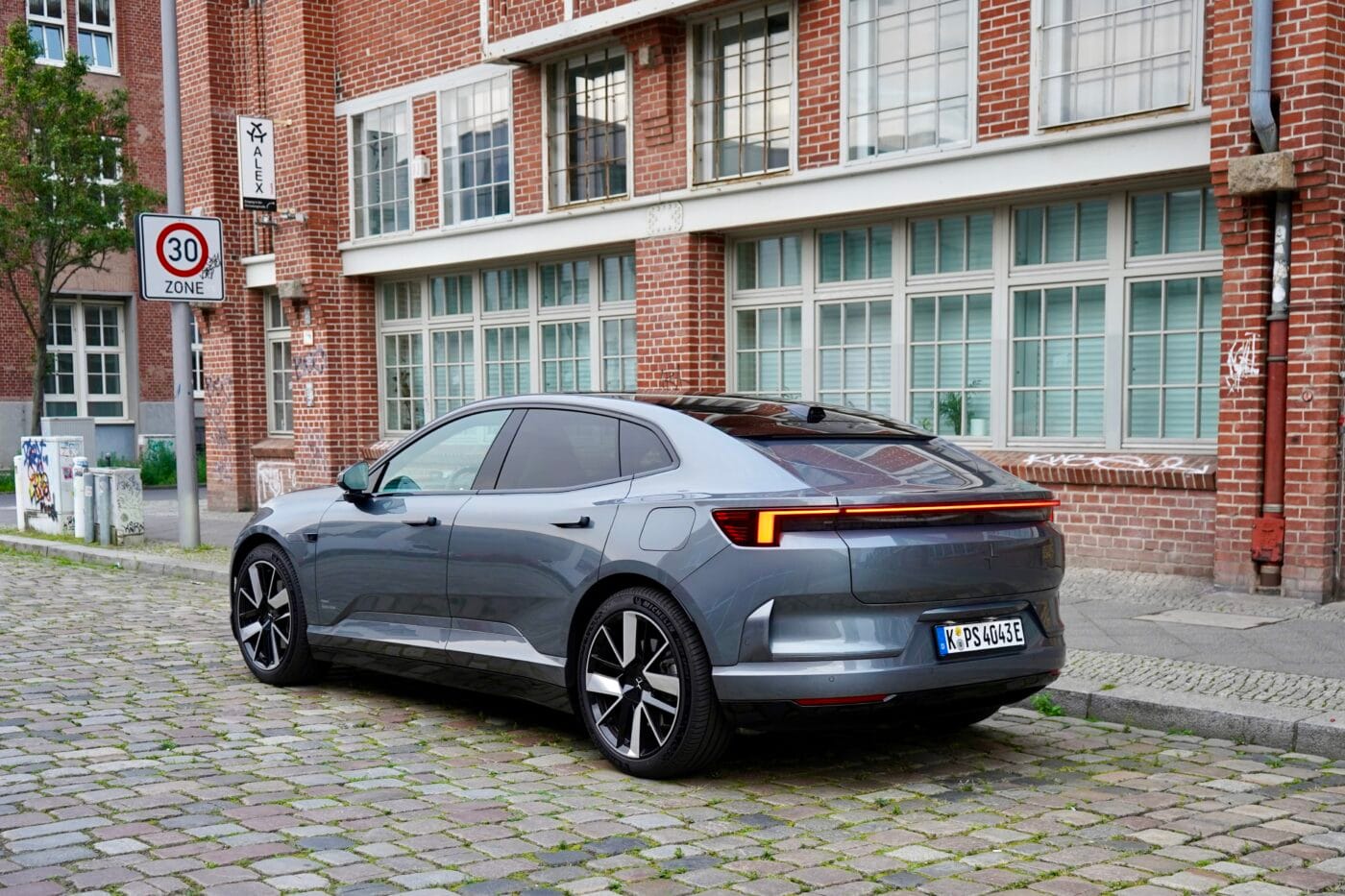
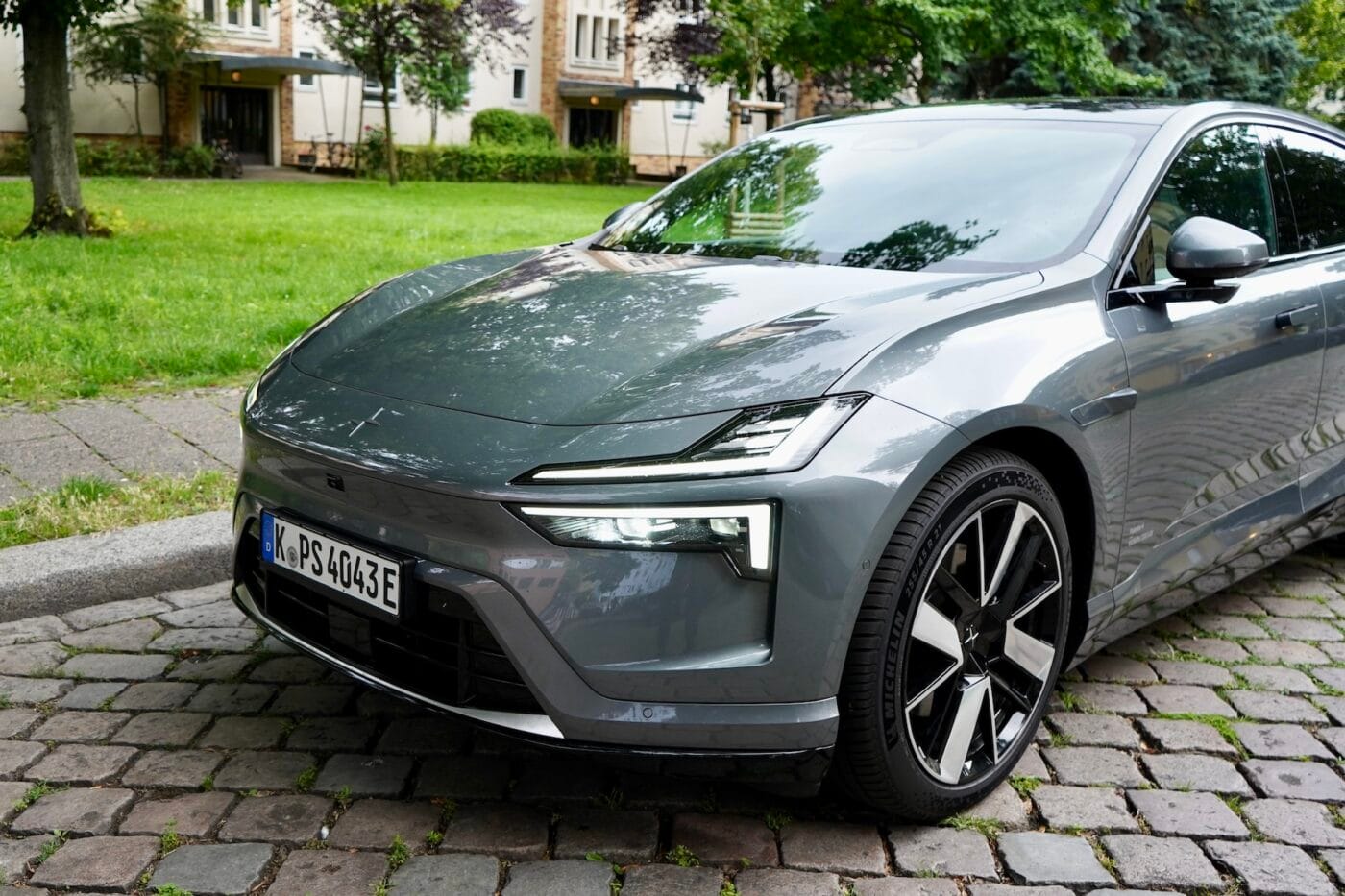
La calidad aún necesita trabajo
La sencillez nórdica y la claridad escandinava conocidas de Volvo y de los modelos Polestar anteriores están en gran medida ausentes en el Polestar 4. El crossover eléctrico se siente más juguetón y muy centrado en la tecnología, con una clara influencia china. La antaño legendaria calidad de Volvo también está ausente en este Polestar, construido en una planta de Geely cerca de Shanghái. Nuestro coche de pruebas, con un precio de más de 75.000 euros, mostró condensación en una luz trasera durante la mayor parte de la prueba, lo que apunta a una calidad de construcción imprecisa.
Aunque estos estándares de calidad "alemanes" clásicos pueden importar menos en la era digital, observamos algunos huecos entre paneles bastante generosos. En un caso, la separación era tan grande que incluso proyectaba una sombra sobre la carrocería adyacente con poca luz solar. A pesar de contar con sólo 17.000 kilómetros en el reloj, el cuero del asiento del conductor ya presentaba arrugas y una ligera decoloración.
Aparte del envejecido asiento del conductor, el habitáculo, revestido en gran parte con materiales reciclados, causó una impresión más fuerte. Como era de esperar en este segmento, Polestar utiliza plásticos suaves al tacto y Alcántara, mientras que los tonos gris claro y blanco crean una sensación de modernidad. Este efecto se ve reforzado por el enorme techo panorámico, aunque el de nuestro coche de pruebas tenía una larga grieta. Muchos subestiman lo vulnerables que son estos techos de cristal a los impactos de piedras, incluso cuando se utiliza cristal de seguridad.
El espacio trasero es lo más destacado
El futurista puesto de conducción está dominado por una pantalla táctil central de 15,4 pulgadas y una consola central flotante, combinadas con unos asientos de gran sujeción que le hacen sentirse bien contenido. La sujeción lateral es excelente, aunque el coche ofrece menos espacios portaobjetos que sus rivales. También hay una sola almohadilla de carga inalámbrica para smartphones en lugar de dos.
En la segunda fila, el espacio es generoso. El espacio para las piernas es claramente de nivel de clase superior, mientras que el espacio para la cabeza es mejor de lo que sugiere la línea del techo del coupé. Con 1,85 metros de altura, aún tenía mucho espacio libre por encima de mi cabeza. La falta de luneta trasera y de cristales laterales tintados, sin embargo, hacen que la parte trasera parezca bastante oscura. Otro detalle extraño: la etiqueta de sostenibilidad del cuero cosida en los respaldos de los asientos - aceptable para un coche de demostración, pero artificioso en un vehículo para clientes.
El enfoque "la función sigue a la forma" de los diseñadores también tiene sus desventajas en el maletero. Con 526 litros (o 1.536 litros con los asientos plegados), la capacidad no está mal. Pero la línea inclinada del techo limita los objetos más altos: incluso una caja de botellas de agua bloqueó el cierre del portón trasero automático. El asiento trasero se pliega sólo 60:40, sin trampilla para esquís ni paso central.
Con "Júpiter" iluminando la noche
Como es habitual, el Polestar 4 incorpora un sistema de infoentretenimiento basado en Android, que resulta convincente tras una breve familiarización con su clara estructura y atractivos gráficos. Menos prácticos son, sin embargo, los botones del volante. Aunque tienen un punto de presión físico, su disposición es en parte poco intuitiva y apenas están etiquetados. Aparte del mando giratorio agradablemente grande para el volumen en la consola central, el Polestar confía por completo en el manejo táctil y el control por voz. Todavía se me escapa por qué hay que tocar la pantalla para abrir la guantera. En este aspecto, Polestar se ha inspirado de forma equivocada en Tesla.
En general, el software funcionó de forma fiable, pero durante todo el periodo de prueba hubo problemas de conexión con Apple CarPlay. Cada vez que se volvía a subir al coche, había que volver a conectar el smartphone manualmente y, en algunos casos, no funcionaba en absoluto. Es posible que este problema se debiera a la falta de un perfil de conductor y que no ocurriera en un vehículo cliente, pero en la práctica, llegó a ser bastante molesto. Un detalle agradable, sin embargo, fue la configuración de la iluminación ambiental: los distintos temas de color tenían nombres de planetas y se mostraban como tales en el menú. El sistema de sonido Harman Kardon opcional con doce altavoces ofrecía un rendimiento con garra, aunque los agudos tenían un toque demasiado reverberante.
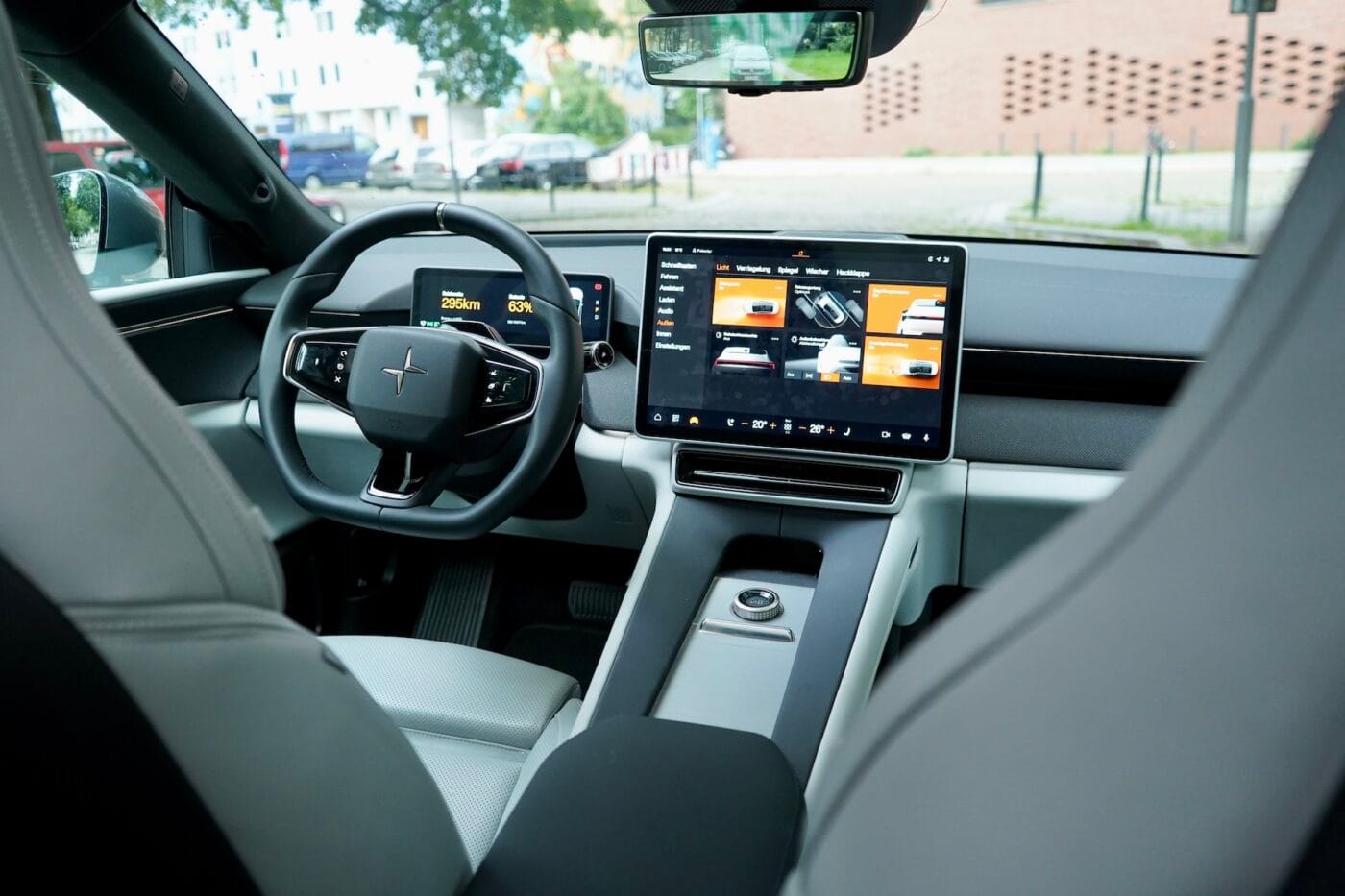
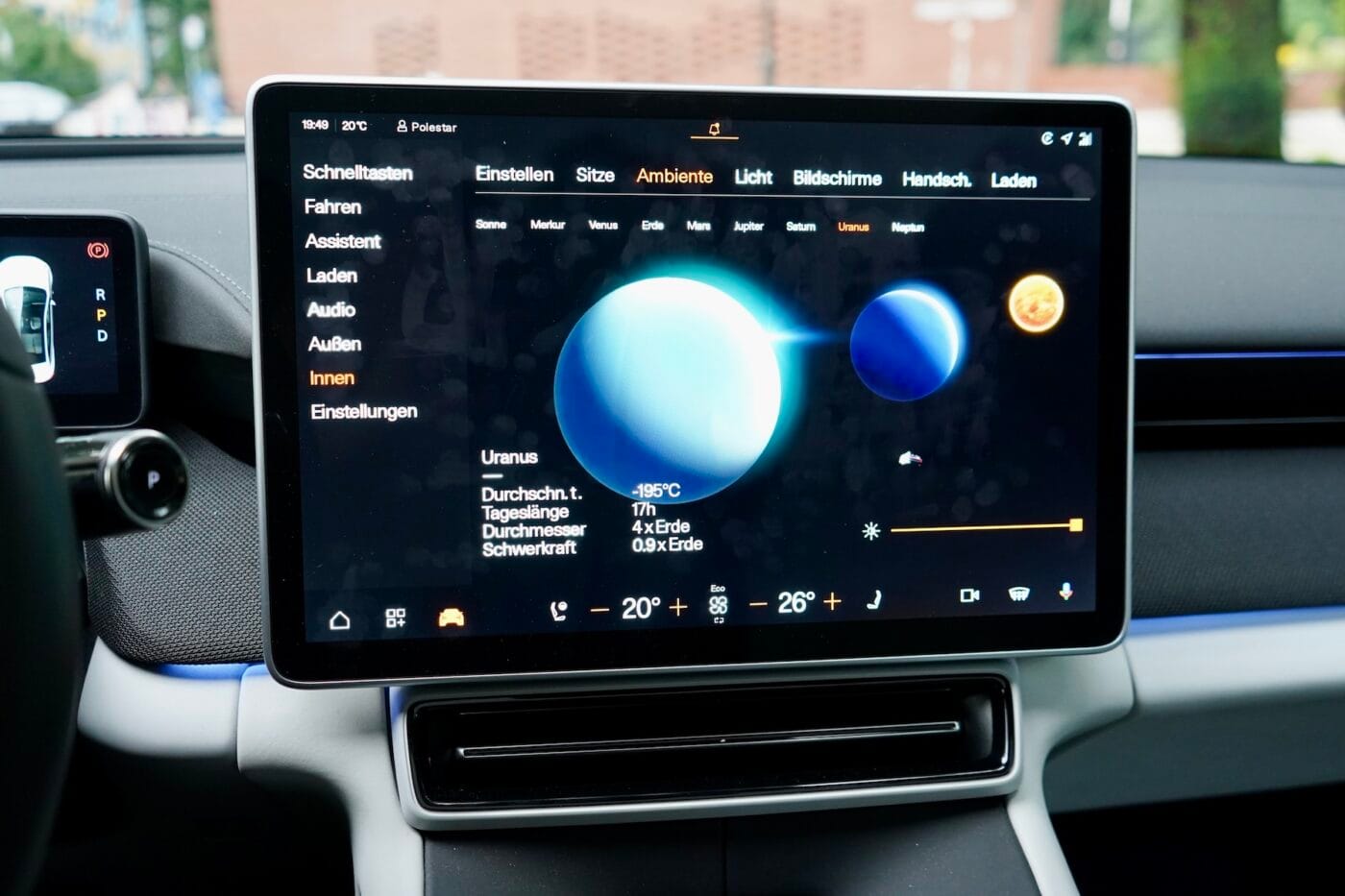
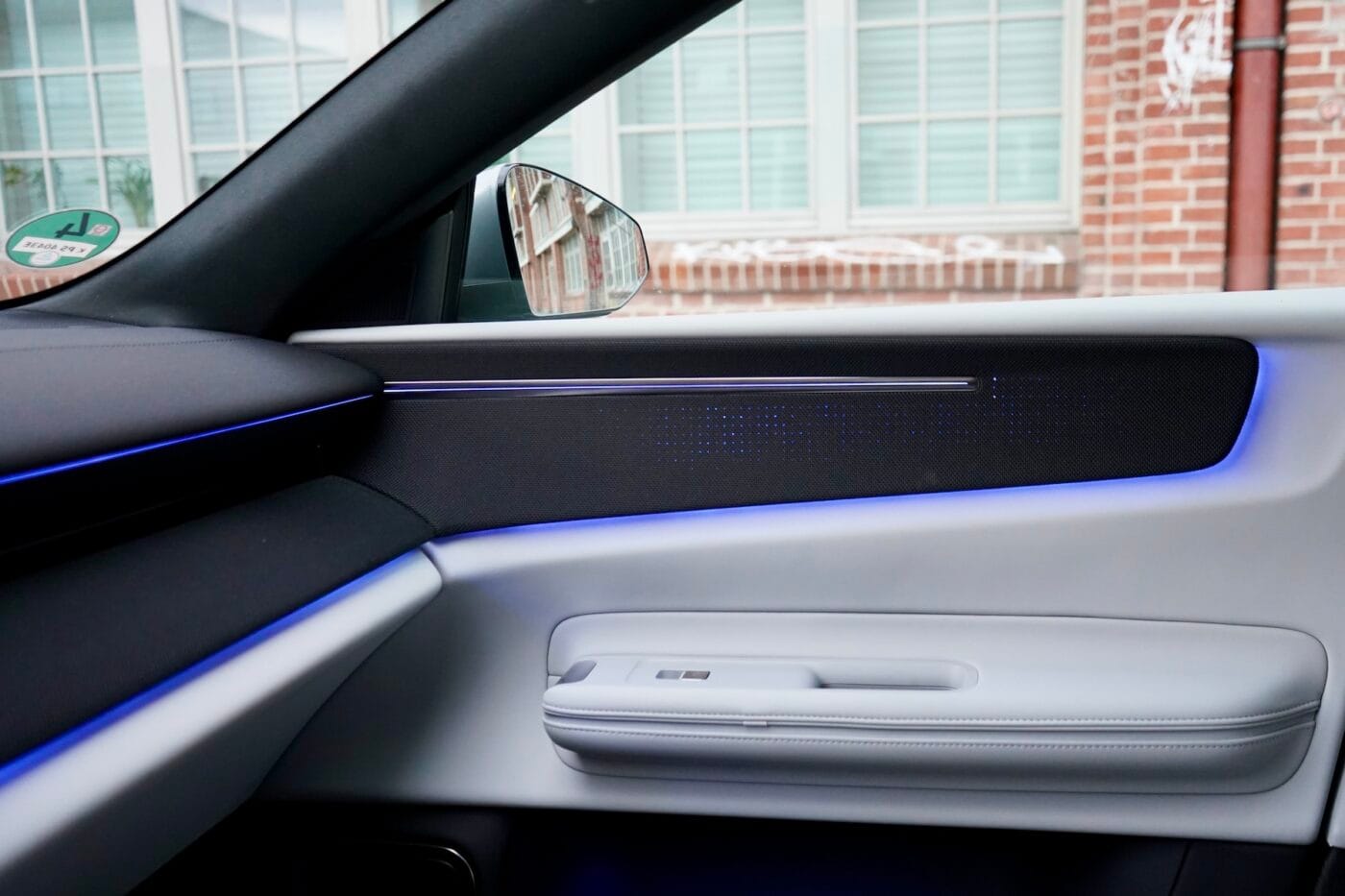
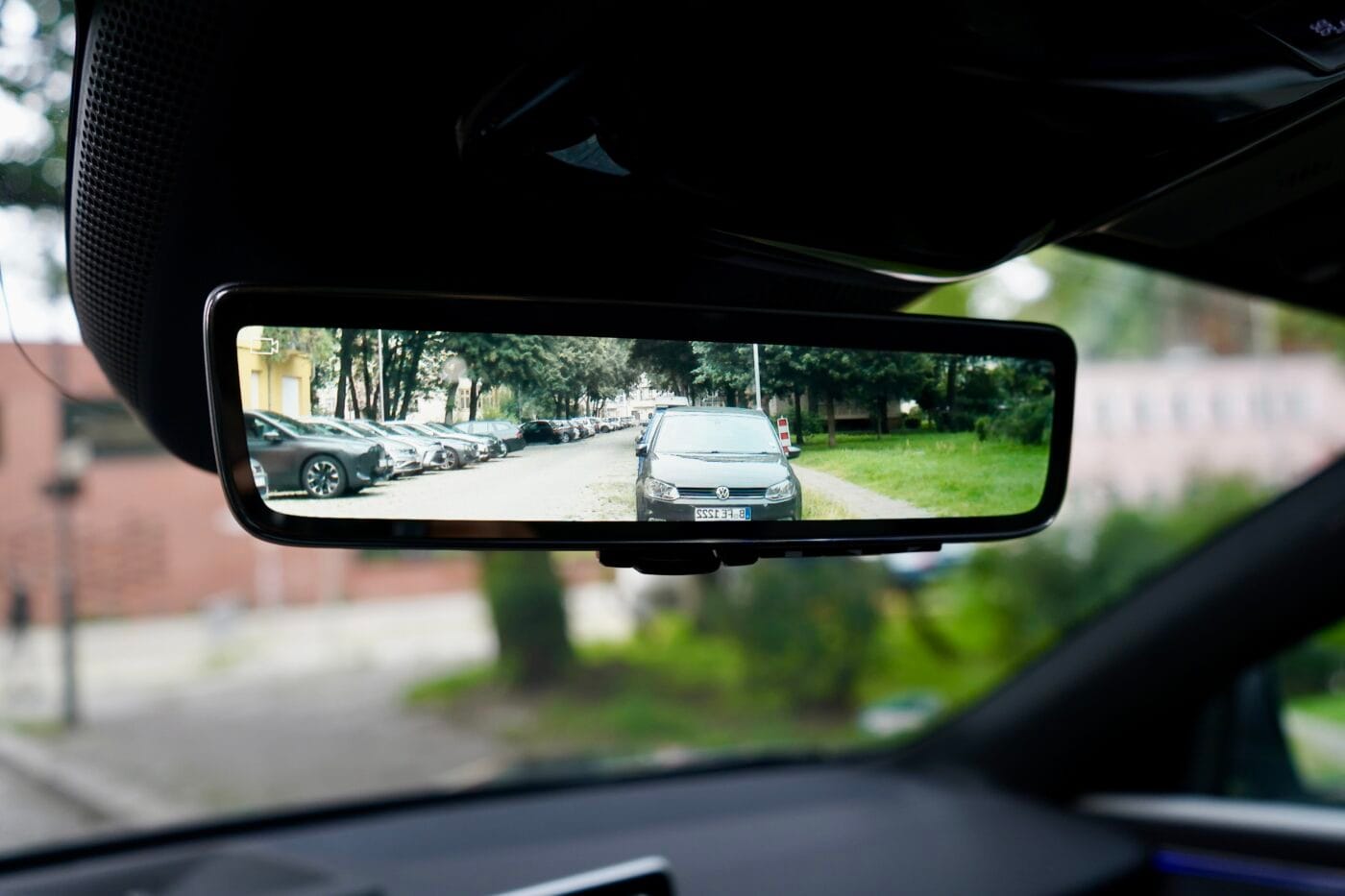
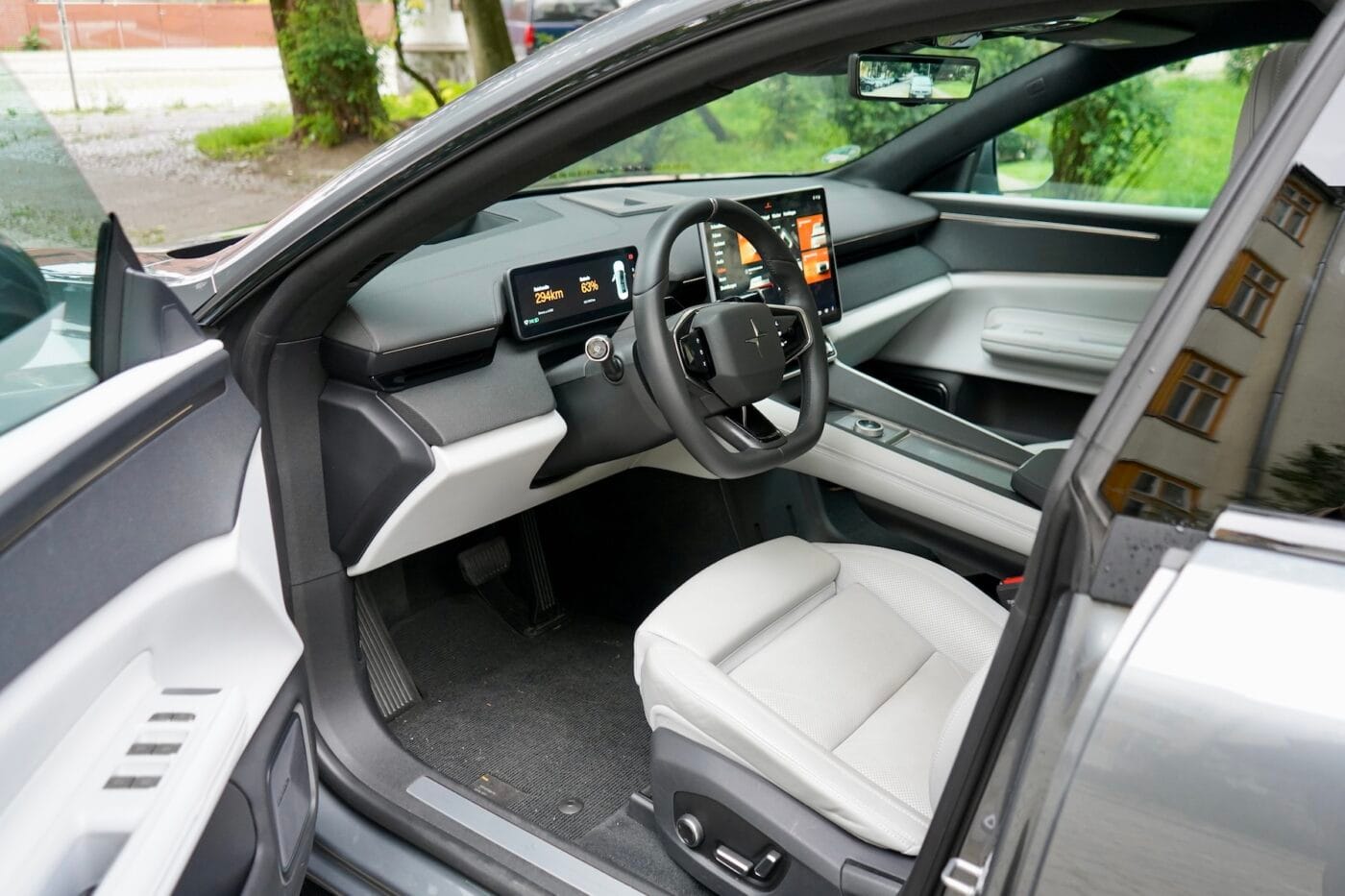
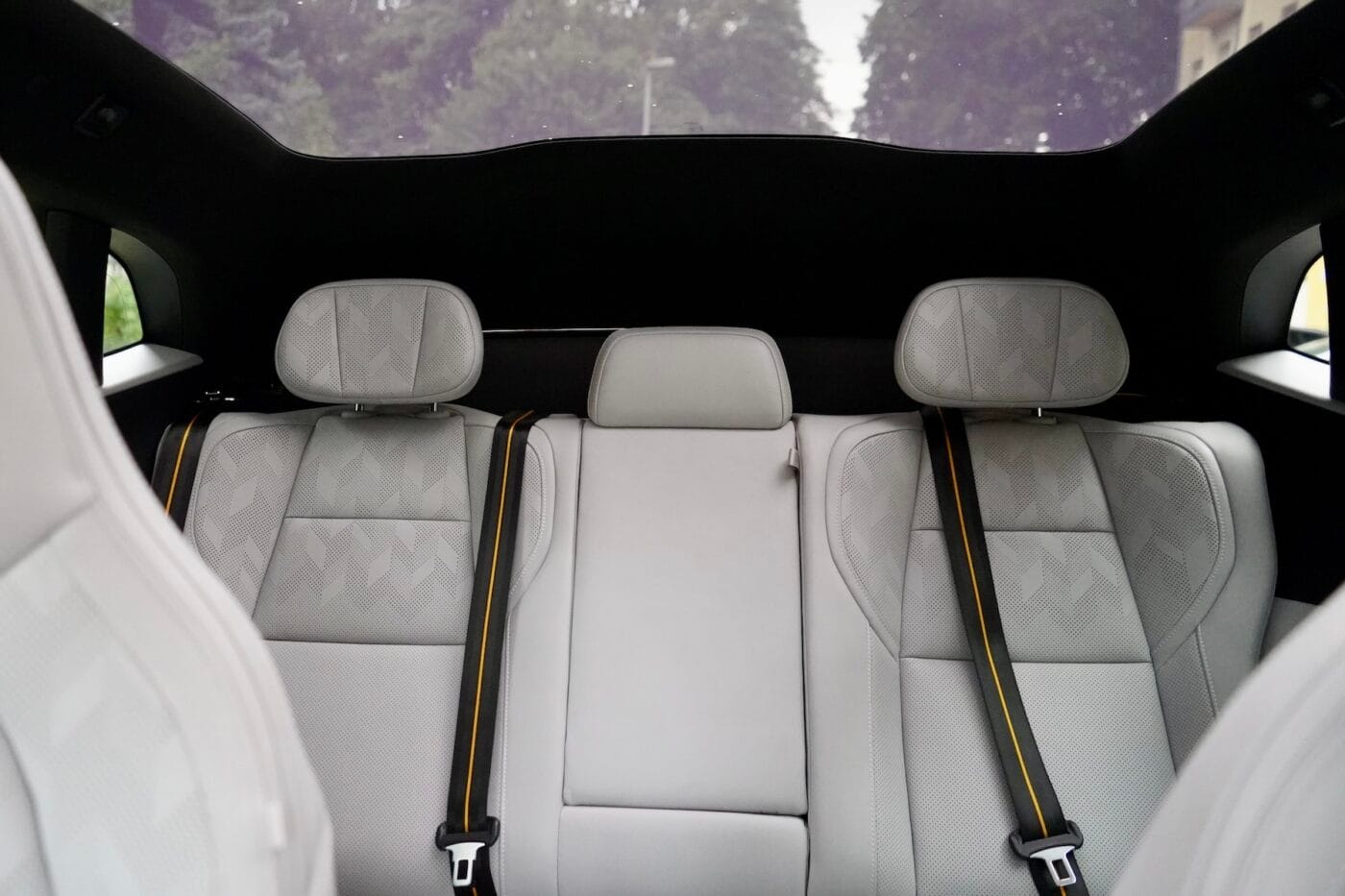
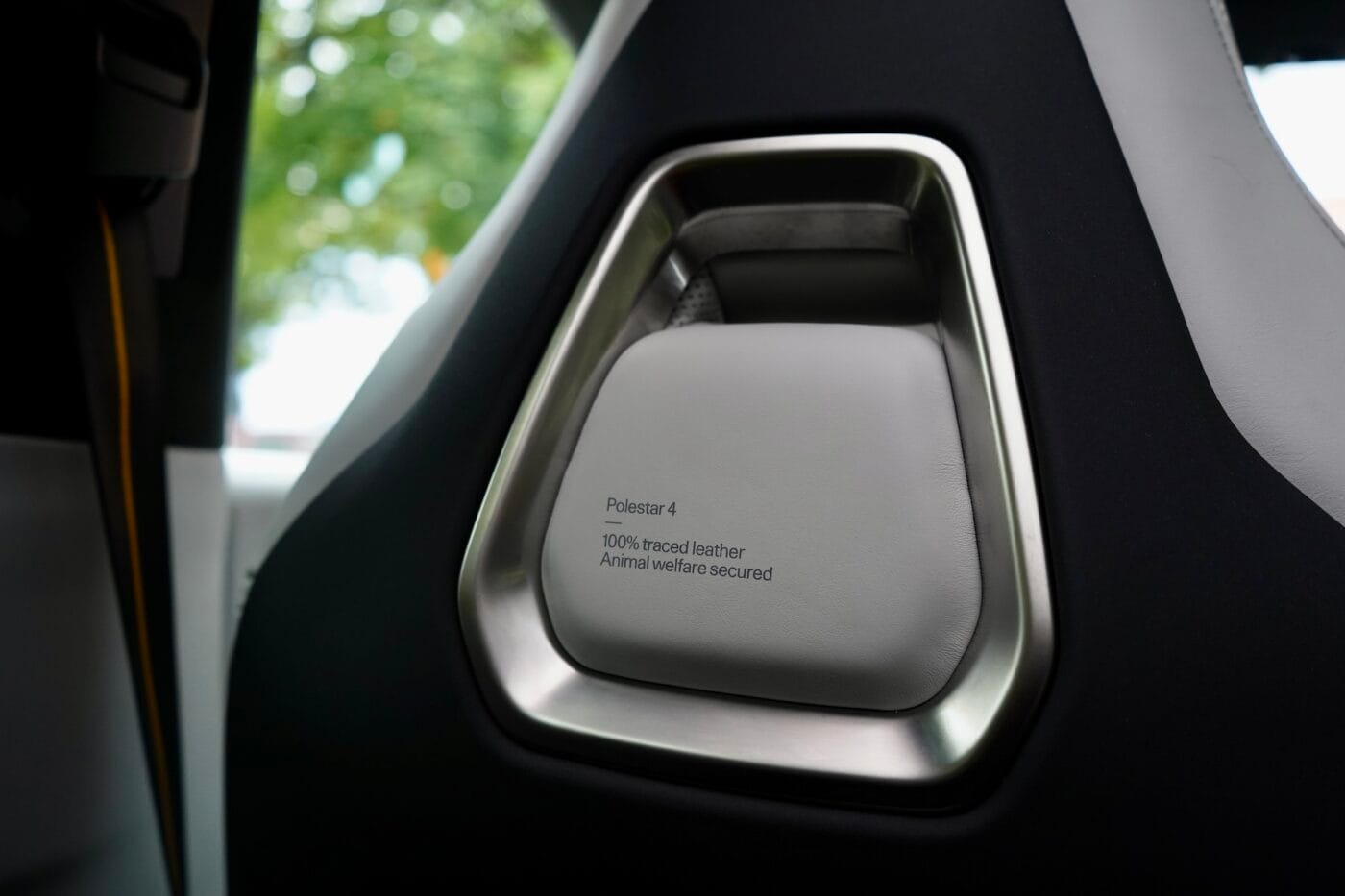
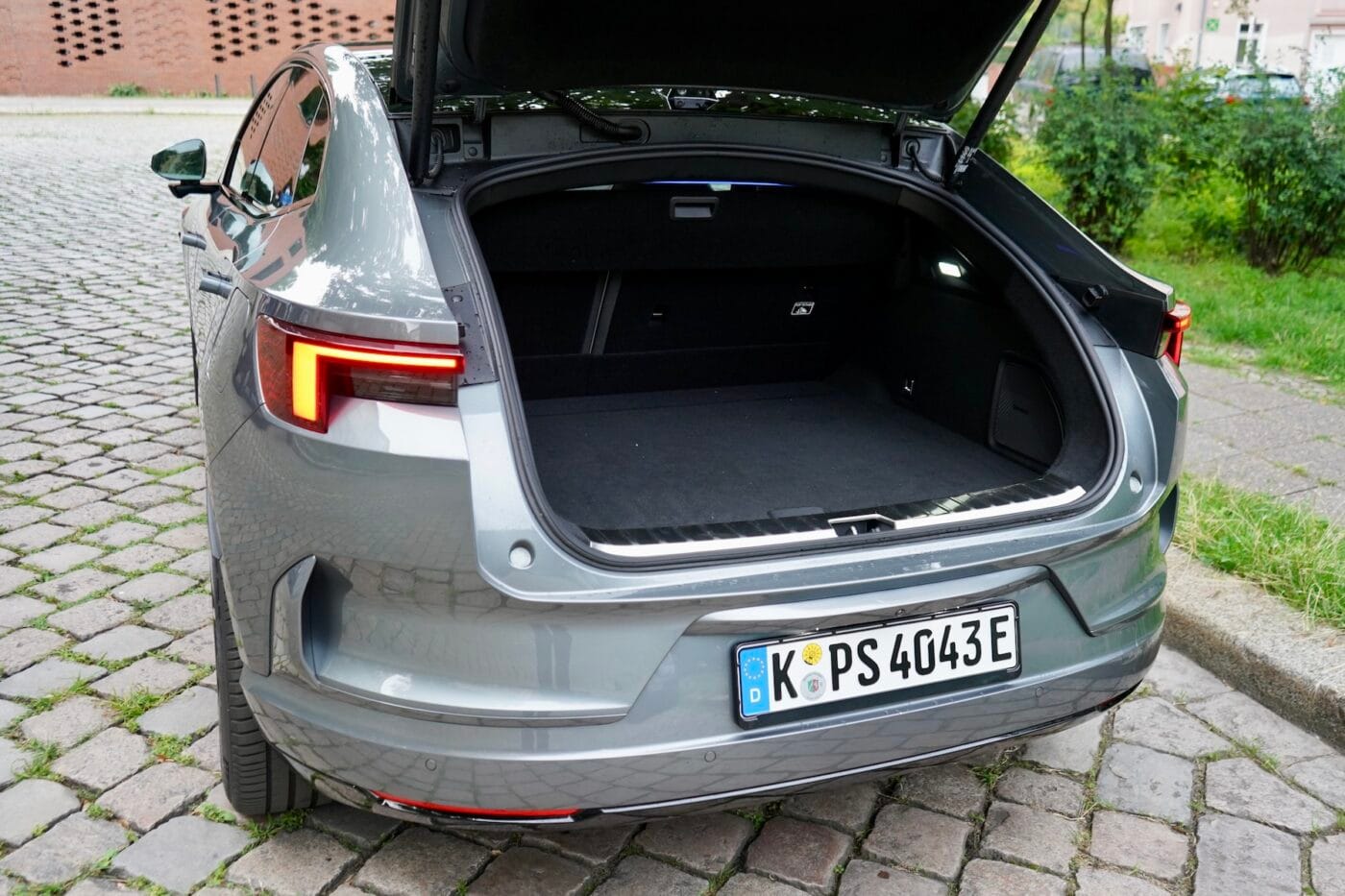
A la motorización de base le falta temperamento
Nuestro coche de pruebas Polestar 4 era la versión base, "Long Range Single Motor". Sin embargo, como el vehículo estaba generosamente equipado, el precio de catálogo se situaba justo por debajo de los 80.000 euros. En el eje trasero se asienta un motor eléctrico de 200 kW con 343 Newton metro de par. Los 7,1 segundos que Polestar cita para el sprint de 0 a 100 km/h son perfectamente respetables. Quien busque una pegada de infarto como en algunos rivales deberá optar por la versión de tracción total, cuyo precio es de al menos 69.900 euros, que completa el mismo sprint en sólo 3,8 segundos.
El único motor trasero ciertamente tiene que trabajar duro con el crossover de casi 2,3 toneladas. La versión probada no daba sensación de falta de potencia y arrancaba bien en los semáforos, pero algunos rivales ofrecen mucha más pegada. Por encima de los 140 km/h, la aceleración en autopista se volvió algo lenta. Polestar cita una velocidad máxima de 200 km/h, pero durante la prueba, el velocímetro mostró un máximo de 210 km/h.
Sólido agarre en carretera y asistentes fiables
El Polestar 4 se pega a la carretera como una tabla incluso a altas velocidades, ayudado por su considerable anchura. Apenas se percibía balanceo de la carrocería en curvas rápidas. En un recorrido rápido por autopista, el crossover también impresionó por sus bajos niveles de ruido. Incluso a altas velocidades, el ruido del viento alrededor de las ventanillas sin marco nunca llegó a ser desagradable.
Los sistemas avanzados de asistencia al conductor (ADAS) también funcionaron bien en la ruta de Berlín a Leipzig. El vehículo mantuvo su carril con fiabilidad, mientras que el Pilot Assist con control de crucero adaptativo funcionó bien incluso a 130 km/h. En la actualidad, el Polestar 4 ofrece funciones semiautónomas de Nivel 2+, estando previsto que más adelante ofrezca el Nivel 3. En la actualidad, los conductores pueden retirar las manos del volante durante unos segundos, pero sus ojos deben permanecer en la carretera.
| Motor único de largo alcance | Motor doble de largo alcance | |
|---|---|---|
| Conducir | RWD | AWD |
| Potencia | 200 kW | 400 kW |
| Par de apriete | 343 Nm | 686 Nm |
| Aceleración | 7.1 s | 3.8 s |
| Velocidad máxima | 200 km/h | 200 km/h |
| Gama WLTP | 620 km | 590 km |
| Batería | 94 kWh | 94 kWh |
| Carga de CC | 200 kW | 200 kW |
| DC 10-80% | 30 min | 30 min |
| Precio | €61,900 | €69,900 |
La suspensión base no es ni cómoda ni deportiva
Mientras que el Polestar 3, de mayor tamaño, viene con suspensión neumática en sus acabados superiores, el Polestar 4, de un solo motor, siempre se conforma con una suspensión convencional de acero. Esa fue una mala decisión, con un claro impacto en el confort. El crossover no puede ocultar su peso y choca con fuerza en baches profundos. Sobre adoquines, el ruido de rodadura es claramente perceptible, sobre todo debido a las grandes ruedas de 20 pulgadas. Sobre suelo irregular, se oían ocasionalmente ligeros crujidos en el interior.
Aunque el Polestar 4 no es un coche verdaderamente deportivo, la puesta a punto es excesivamente firme, aunque las sacudidas bruscas nunca resultaron desagradables en el interior del habitáculo. En este rango de precios, Polestar debería al menos haber ofrecido como opción los amortiguadores adaptativos ZF, de serie en el modelo de tracción total. La firmeza de la dirección puede ajustarse en tres niveles: al máximo, la respuesta es contundente y aumenta la diversión al volante, aunque la dirección nunca pierde por completo su tacto sintético. En el lado positivo, el pitido del asistente de velocidad es relativamente discreto y puede desactivarse por completo.
El consumo sigue siendo razonable
Cada Polestar 4 está equipado con una batería NMC con una capacidad útil de 94 kWh, que en versión de tracción trasera permite una autonomía WLTP de hasta 620 kilómetros. En mi prueba de conducción por autopista a alta velocidad, una carga me proporcionó unos 380 kilómetros. El consumo de fábrica se declara entre 17,7 y 18,1 kWh, lo que es alcanzable con una conducción moderada y urbana. Esto también lo confirmó la prueba de mi colega Sebastian Schaal. Por tanto, deberían ser posibles unas autonomías en el mundo real de unos 500 kilómetros.
Debido al elevado porcentaje de autopista y a una conducción más rápida, mi consumo alcanzó los 21 kWh. Salí de Berlín con un 94% de carga y una autonomía restante indicada de unos 580 kilómetros. Tras una parada en Potsdam, continué hasta Leipzig y de vuelta con algunos desvíos. Dadas las altas velocidades, era inevitable hacer una parada para cargar. En el trayecto de vuelta, el Polestar 4 llegó a la estación Ionity de Linthe, en la A9, con sólo un cuatro por ciento de carga restante.
31 minutos del 10 al 80
Polestar cita una potencia máxima de carga de 200 kW - aceptable para este segmento, pero no sobresaliente. Con su arquitectura de 400 voltios, el crossover no puede igualar a competidores de 800 voltios como el Audi A6 e-tron o el Kia EV6. Este último es mucho más barato, pero carga hasta a 258 kW, consiguiendo entre el 10% y el 80% en sólo 18 minutos.
En nuestra comprobación de la curva de carga, el Polestar 4 superó ligeramente las afirmaciones de fábrica, alcanzando brevemente los 203 kW tras el arranque. A partir del 20 por ciento, la potencia comenzó a descender. Entre el 25 y el 45 por ciento, se estabilizó entre 160 y 174 kW. A continuación, se redujo gradualmente pero se mantuvo por encima de los 110 kW hasta el 80 por ciento. La potencia media de carga fue de 140 kW, con 76,2 kWh suministrados durante el proceso.
El proceso completo de carga del 10% al 80% duró algo menos de 31 minutos, casi exactamente igual que la afirmación oficial de media hora. Este tiempo de espera es manejable, pero los rivales completan la tarea mucho más rápido. Nuestro coche de pruebas incluía el paquete Plus de 5.500 euros, que permite una carga de CA de 22 kW. Los compradores de la versión básica deben conformarse con 11 kW.
Conclusión: Caparazón extravagante con sustancia media
El Polestar 4 es, ante todo, una declaración de diseño. Llama mucho la atención sin perder el ADN de diseño de la marca a pesar de su carácter experimental. El interior ofrece un amplio espacio y un ambiente claramente moderno con un toque escandinavo.
Pero cuando se trata de los temas que más importan en los coches eléctricos, a este crossover coupé le cuesta destacar. Ni la eficiencia y la autonomía ni el rendimiento de carga son líderes en su clase, sino que se sitúan firmemente en el medio campo. Si a esto añadimos una calidad general lastrada por detalles descuidados y un confort de suspensión por debajo de lo esperado para la categoría de precio, el resultado no está a la altura de las pretensiones premium. Si la filial de Geely quiere establecer a Polestar como una verdadera marca premium a largo plazo, aún le queda trabajo por hacer.


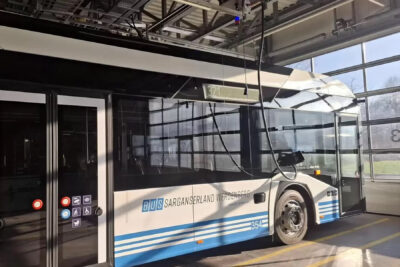

7 Comentarios